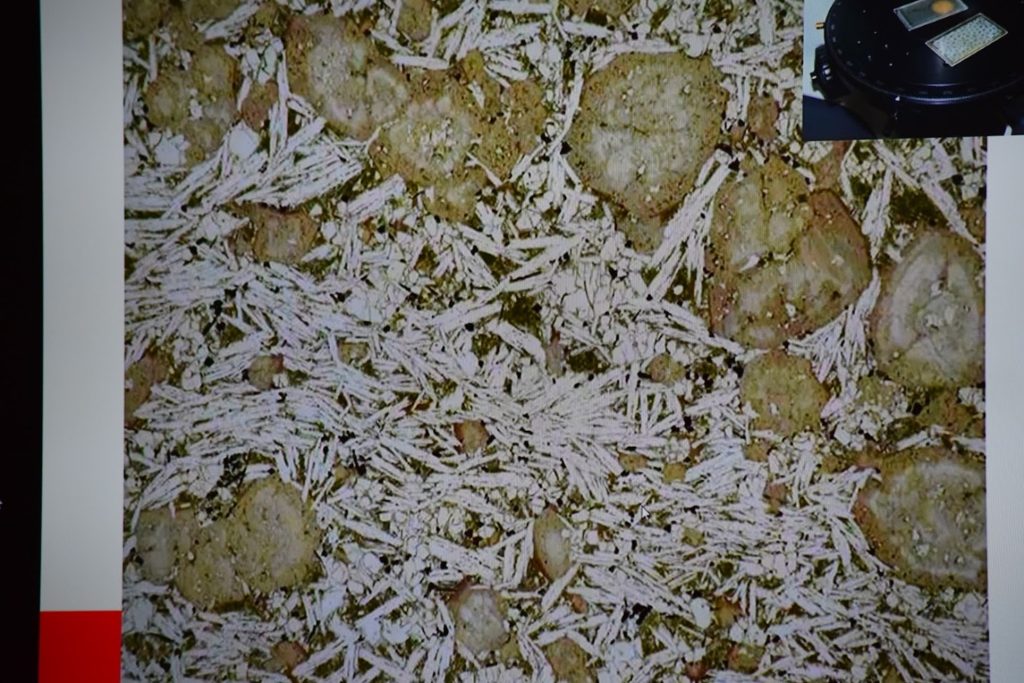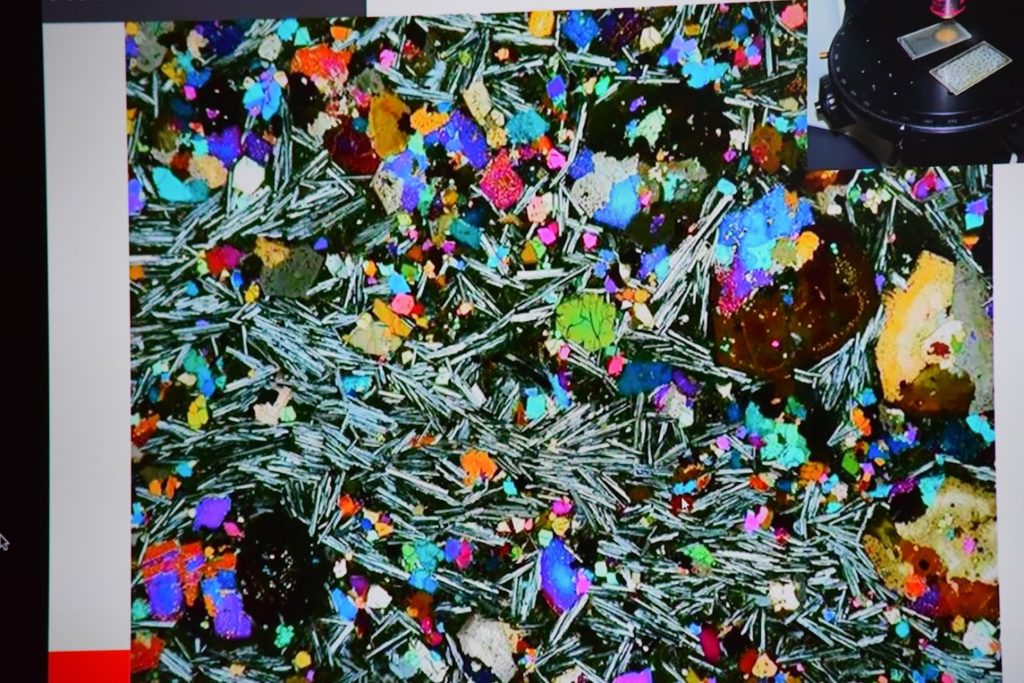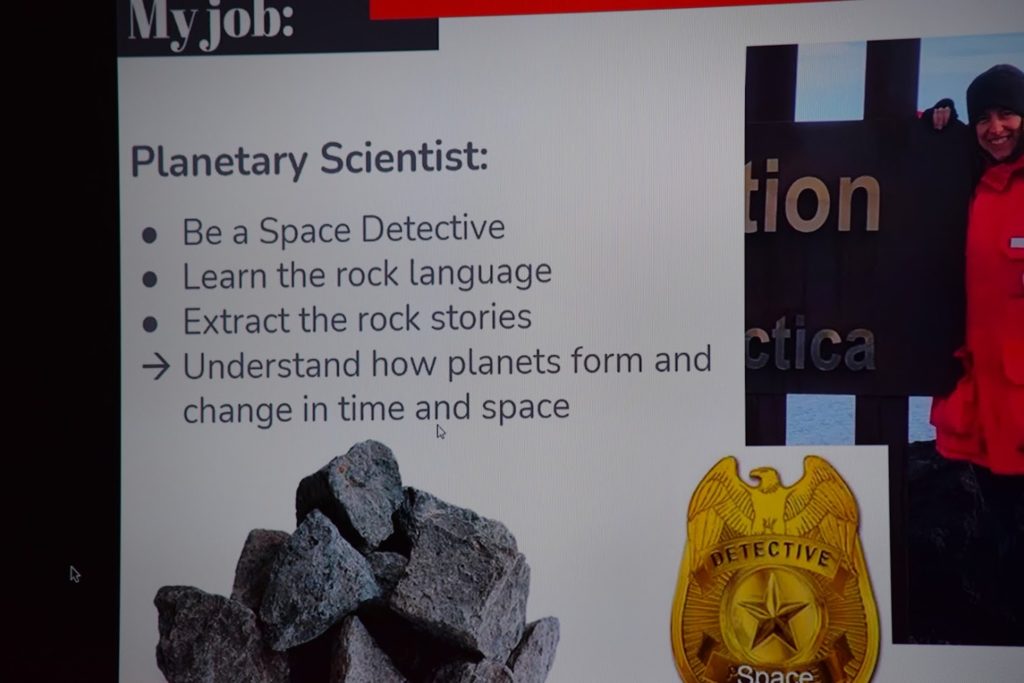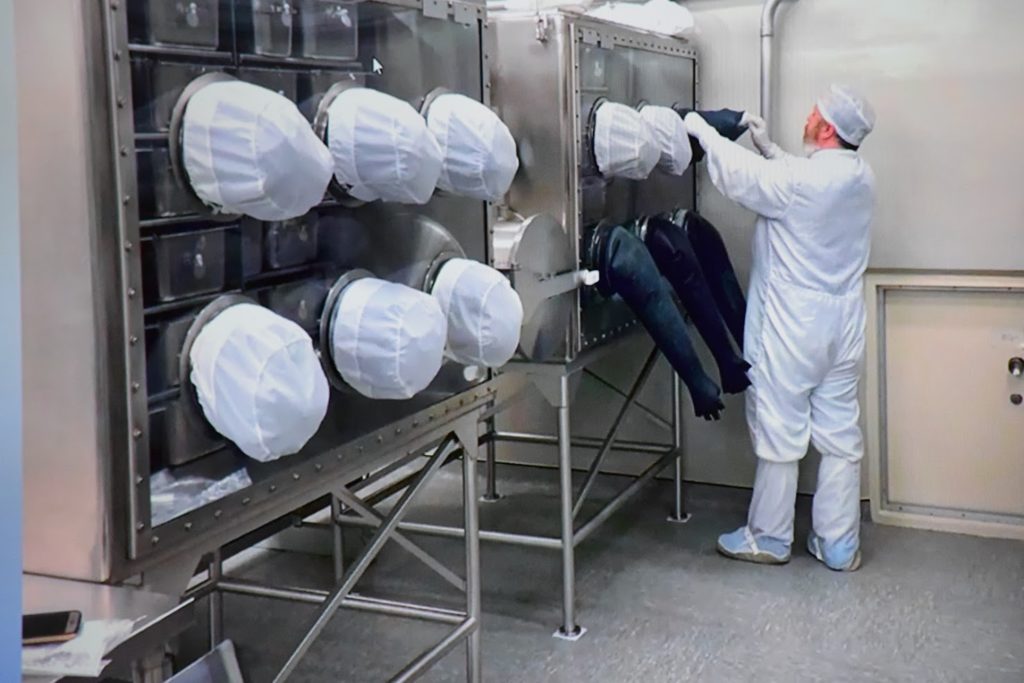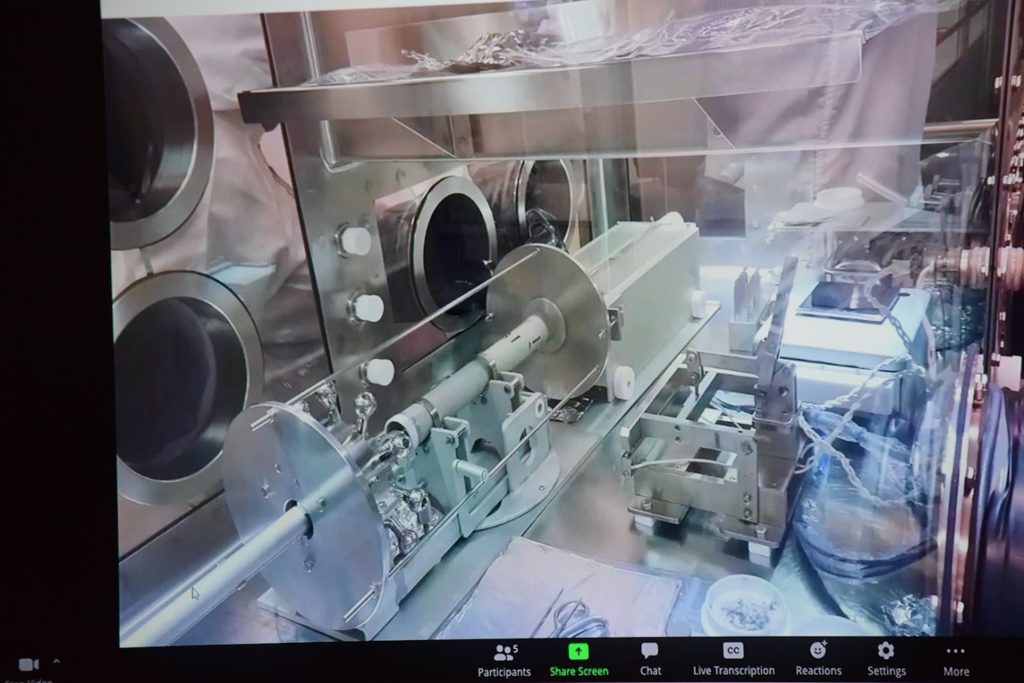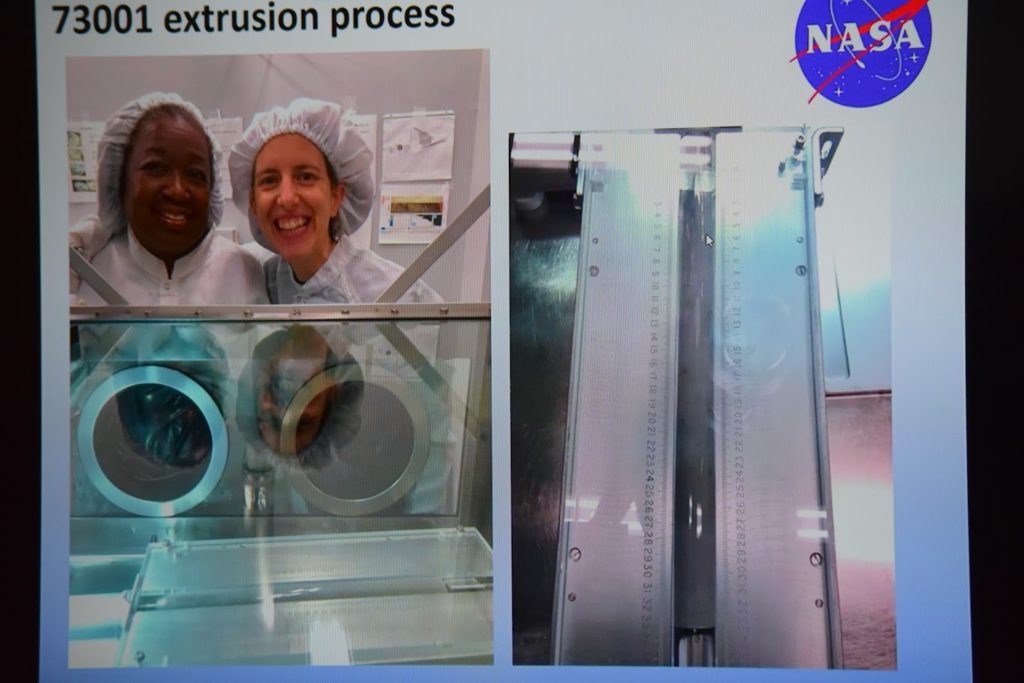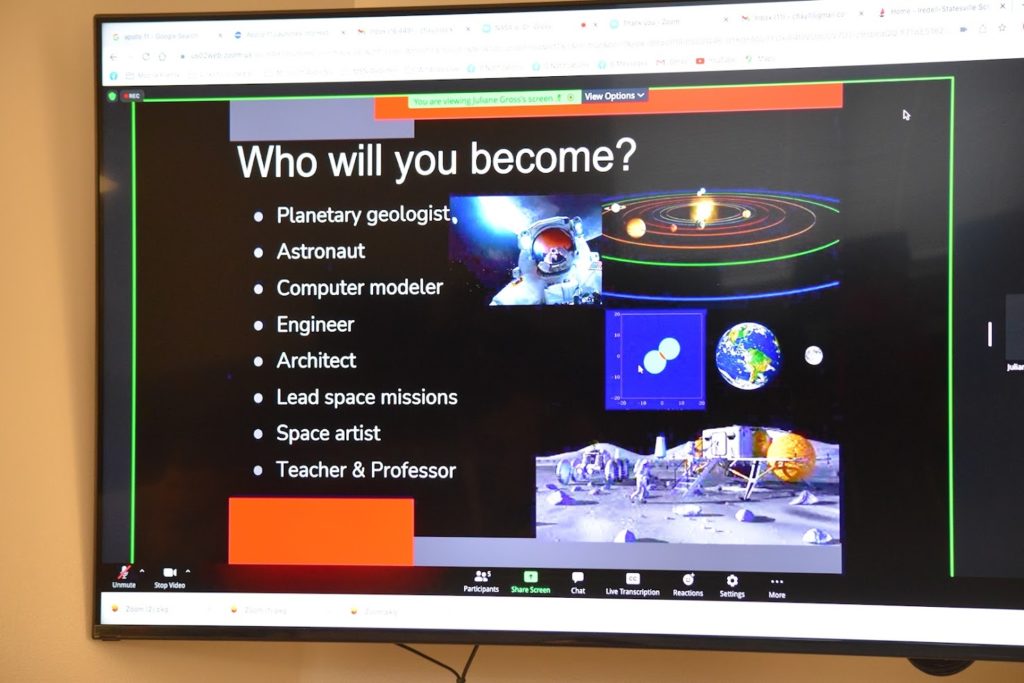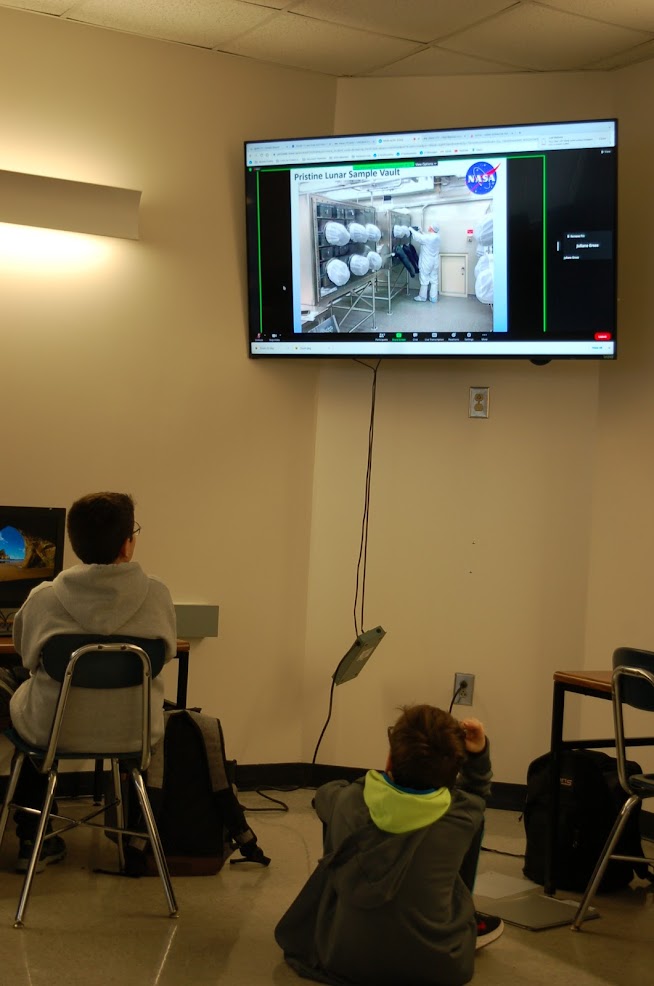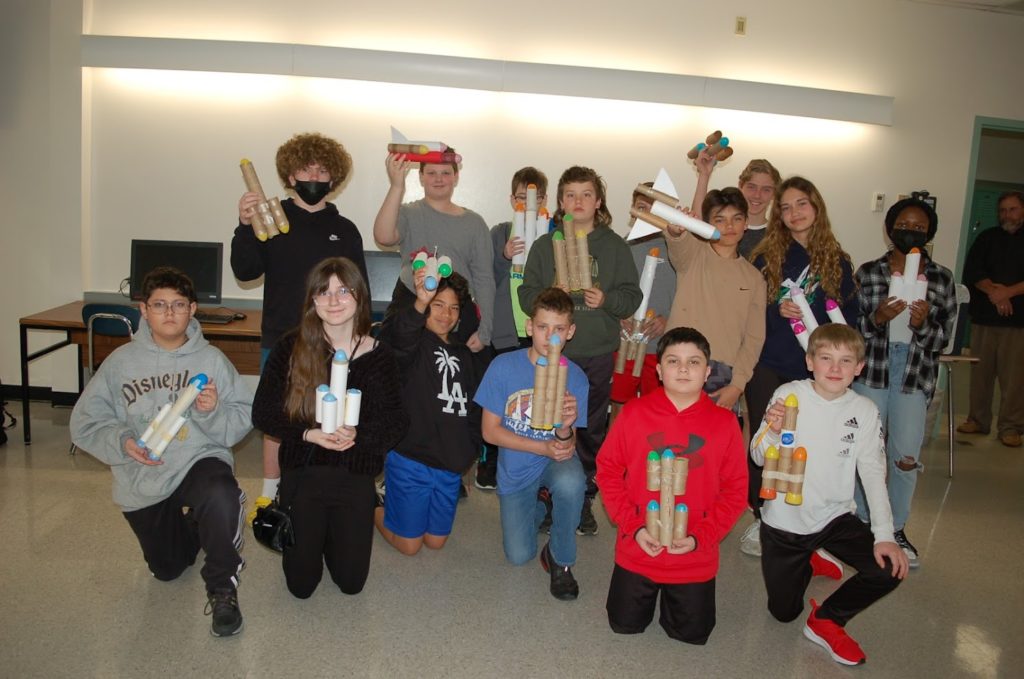
BY DEBBIE PAGE
debbiepage.iredellfreenews@gmail.com
Dr. Juliane Gross, Deputy Apollo Sample Curator at NASA Johnson Space Center, spoke with CTE teacher Charles Flay’s class on Monday afternoon as part of its project-based learning unit on rocket design.
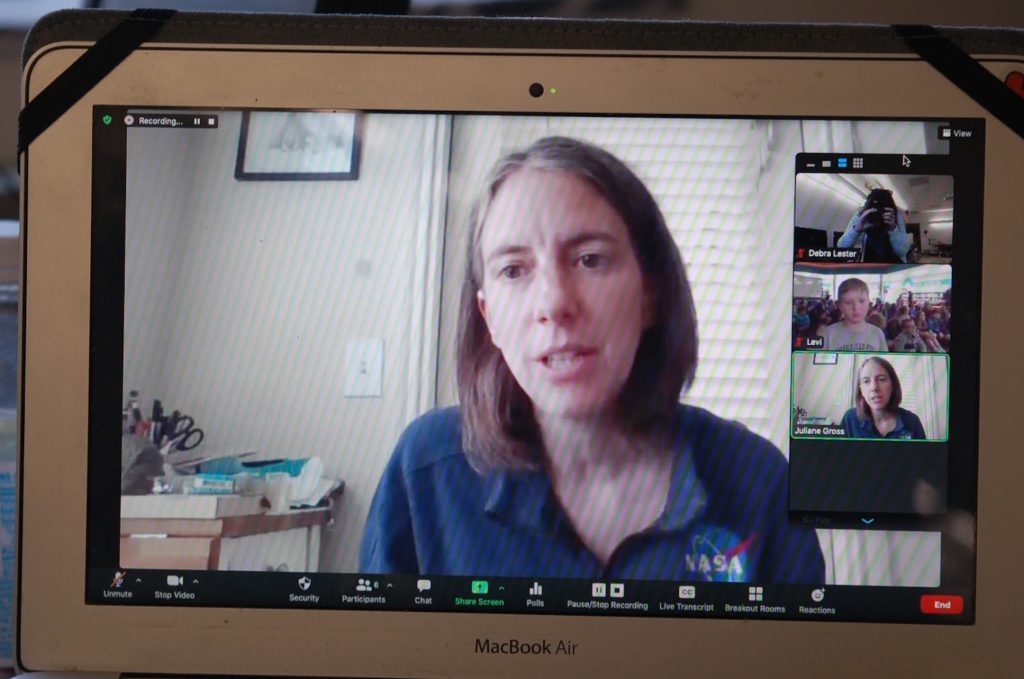 Students visited with Dr. Gross via Zoom from her NASA laboratory at the Johnson Space Center to learn about the research work she is doing on the Apollo moon rock samples. Debra Lester, a NASA ambassador and Iredell-Statesville Schools Middle School STEM coach, arranged the session.
Students visited with Dr. Gross via Zoom from her NASA laboratory at the Johnson Space Center to learn about the research work she is doing on the Apollo moon rock samples. Debra Lester, a NASA ambassador and Iredell-Statesville Schools Middle School STEM coach, arranged the session.
Dr. Gross is as an associate professor at Rutgers University and also works for NASA in the Astromaterials Research and Exploration Science division (ARES). She was assigned as the lead scientist in charge of opening the sealed Apollo 17 core moon samples, which have awaited examination for 50 years.
“This makes her a real live ‘rock’ star,” joked Lester. “The special mission of opening the sealed containers was quite tedious. One of the core samples was actually opened in 2019 and scientists realized that the samples contained special gases called volatiles.”
NASA knew that technology would continue to improve so they purposely saved the samples until they felt their tools were advanced enough to open the samples and begin their examination.
“Because the scientists didn’t expect the gases and weren’t prepared to capture them, the gases were completely lost because volatile gases evaporate at room temperature,” explained Lester. After learning this, Dr. Gross helped devise a way to extract the samples but also capture the volatile gases to study.
MOON ROCKS!
In her “Moon Rocks!” presentation, Dr. Gross explained that rocks are like books because the minerals contained within them also tell stories that reveal knowledge, information, and history. “We try to understand what the stories are by examining them.”
Dr. Gross explained that scientists take slices of the rocks, grind them into a state thinner than paper, and then look at the samples through a microscope, using filters that color the different minerals and help them better see the “story.”
She likened herself to a “space detective” that is learning rock language to decode the stories of how planets change over time.
Moon rocks are different from earth’s, which have been exposed and changed by oxygen, water, wind, ice, vegetation, and humans. Because of these exposures, scientists must get rocks from other planets, which do not have these climate interrupters, to find the stories of the birth of the earth and solar system.
“These rocks have preserved all their stories – they’re a museum, of sorts. They have preserved their record of formation,” explained Dr. Gross.
NASA’s 842 pounds of moon rocks were collected from a small area of the moon during missions from 1969 through 1972. The rocks fall into three different types: anorthosite, the oldest rocks with the most stories; basalt, the youngest rocks; and breccia, rocks of mixed age blended by the heat of asteroid impacts on the moon.
The moon was once covered in magma, which cooled and formed crust. Asteroids crashed into the moon, making craters and sometimes a lava lake that became the young basalt rocks. The lighter parts of the moon are old rocks, while the darker spots are newer. Because most of the moon is white, it reflects brightly when the sun’s rays hit it.
MOON ROCK RESEARCH
Dr. Gross said the moon rocks are kept in an extremely secure building with no windows. She must pass through two additional layers of security to get into the rocks, which are kept in clear drawers filled with nitrogen gas to preserve them.
She must wear a protective “bunny suit” covering and shoe covers to enter the room, and the scientists handle the rocks and conduct their research inside the nitrogen box through openings equipped with long gloves to avoid rock contact with oxygen or humans.
If removed from the box, the rock is first sealed in nitrogen in a protective plastic pouch.
Dr. Gross hopes that more astronauts will soon make the three-day trip to get rocks from other areas of the moon.
Scientists also hope to learn the tools and processes needed to eventually set up a long-term living base for astronauts to conduct more extensive exploration. This base would also allow them to test out the technology to prepare for future colonies on planets further away like Mars, which requires an eight-month trip.
Scientists believe that ice may be in some of the deep moon craters. The ice could be melted into water, allowing scientists to separate the hydrogen and carbon atoms to create rocket fuel for relaunching from the moon.
WOMEN IN STEM CAREERS
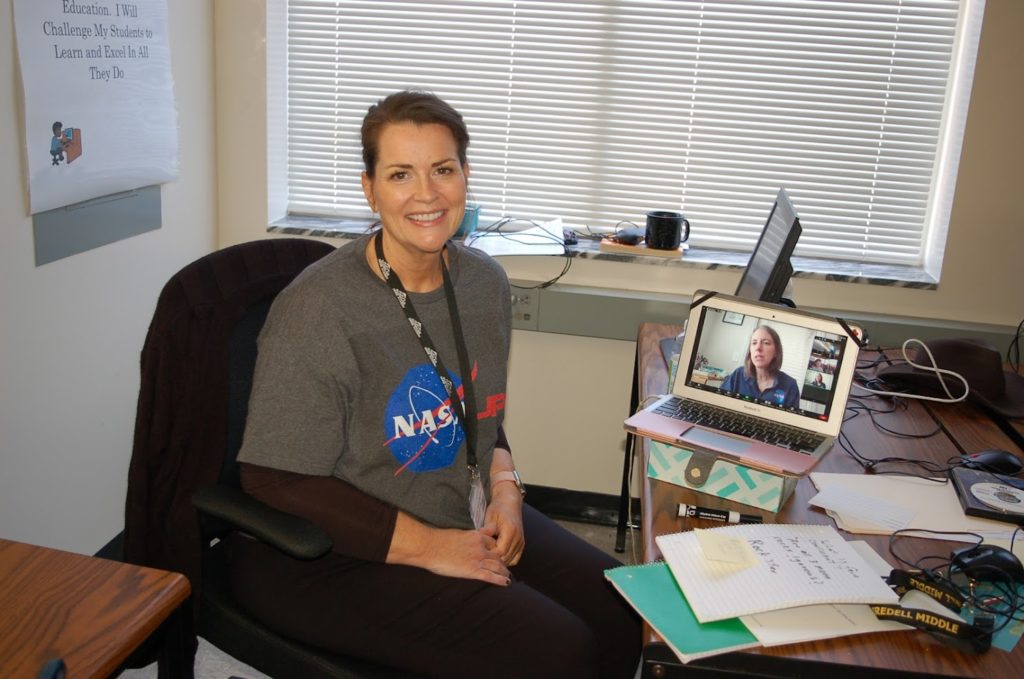 Dr. Gross studied Geoscience in her native Germany, where she received her PhD. She was at the top of her class and earned several scholarships, including a NASA-funded study of volcanoes in Hawaii.
Dr. Gross studied Geoscience in her native Germany, where she received her PhD. She was at the top of her class and earned several scholarships, including a NASA-funded study of volcanoes in Hawaii.
Her research has taken her all over the world, including New York, California, Paris, Antarctica and nearly everywhere in between.
Dr. Gross is especially passionate about sharing how lunar samples from Apollo and lunar meteorites help connect the past, present, and future. She is involved in several major projects at NASA, including the upcoming Artemis mission, which plans to put the first female on the moon.
“My goal in connecting students and NASA is rather selfish,” said Lester. “I am a self-proclaimed space junkie and jump at any chance to share that world with others.”
“Of the four-person NASA team working on the moon rock samples, there are two males and two females. I purposely asked Dr. Gross because she is the lead scientist and she’s female.”
“As a CTE-STEM Coach, my job is to promote STEM learning in grades fifth through eighth classrooms, but my heart is profoundly passionate about promoting women in STEM.”
“When asking the average person to name women who have been to space, most name three: Sally Ride, Mae Jemison, and Christa McAuliffe. In fact, there have been more than 75 women in space.”
“It is important to me that girls see themselves as scientists, software developers, engineers, statisticians, and more. And it is imperative that we promote women in STEM to these young minds,” added Lester.
“DREAM BIG”
Dr. Gross told the students that by the time they finished college, lunar exploration may be quickly advancing to the point of building a permanent base on the moon with the additional help of private space companies like Spacex. “You could be some of the first people living on the moon. You can train and study to go too.”
“Dream big and become what you want to become.” However, she noted their dreams may evolve over time as hers did.
Dr. Gross at first dreamed of being a farmer, then became interested in the earth and rocks, leading her to attain a doctorate degree in geology. After her motion sickness dashed her dreams of becoming an astronaut, she become a NASA planetary scientist to examine rocks from other planets and asteroids.
Dr. Gross believes it will be 10 to 15 years before NASA sends a manned mission to Mars, but NASA will be sending robots to other planets to collect information. One project is a robot voyage to Europa, the ice moon, to drill down into the core to look for ice and water. Other robots will sample rocks on asteroids.
Another robotic mission dream is to visit Venus, but scientists must first develop equipment that can withstand the extremely high temperatures on the planet.
Dr. Gross also told students that astronauts come from many different backgrounds, including military pilots, geology and other physical sciences, medicine or biological sciences, engineering, and mathematics.
Astronauts usually have studied to a master’s or PHD level in their field, usually 5 to 8 years, and then must still undergo rigorous astronaut training through NASA to become an astronaut, in addition to being in excellent health.

